Do you ever wonder “What does light stress look like on plants?”. I can not explain that in one sentence.
That’s what I thought about writing this article to explain how light stress affects plants, especially on succulents.
In the end of this article you may get an idea about what is light stress and how it affects plants.
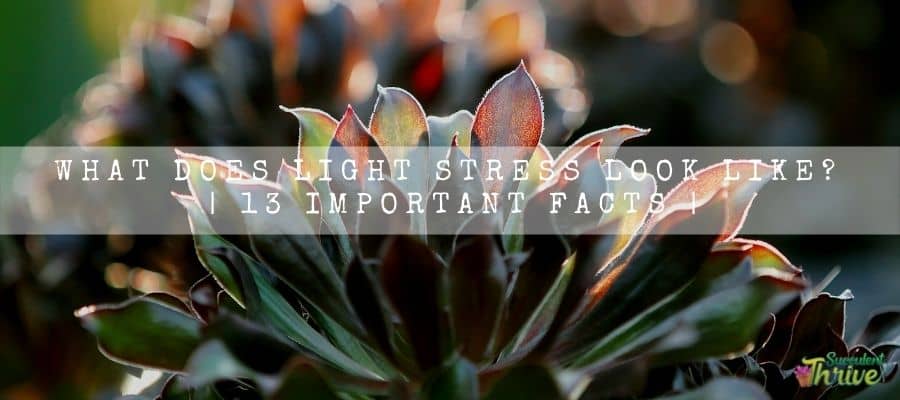
What is light stress?
Light stress means variations of morphological features or physiological function of a plant due to excess or insufficient light.
All plants
When a plant is in stress, the signs which you could spot at the beginning would be leaves losing their fleshiness.
Instead, they tend to become crispy. They will further look like they are burnt along with brown patches.
In addition to that, buds may also tend to start bleaching. Ultimately, they could even turn bright white.
Succulents
Interestingly succulents require a little light stress to display more attractive colors. You could spot stress in various shapes, sizes, and in numerous formations too. It applies to the lives of all organisms.
Succulents usually tend to stress, as a way of responding to a deviation from proper growing conditions.
We could elaborate on that more if we take a succulent which grows tall and leggy when it is running short of sunlight. It indicates that the plant is in stress.
Once a succulent is in stress, they make pigments such as anthocyanin and carotenoid.
Those pigments assist in safeguarding the plant from environmental stressors, particularly from sun damage. If a plant produces more of these pigments, the color of the plants would be even more attractive.
Signs of too much light on plants
When a plant is suffering from sunburn, It is common to spot a light browning on the leaves’ surfaces which could affect the plant if you do not attend to it immediately.
You could spot this commonly at the leaf’s tips. Afterwards they could get crispy too. In addition to that, there could be small brown patches that also appear on the plants.
Furthermore, one more indication the plants do to indicate they are getting too much sunlight is wrinkled leaves.
It is not difficult to avoid the plant getting sun burns. Many of the succulents can withstand the full sunlight for most of the time if you have acclimated them.
Acclimatization is an activity which is gradually exposing the plants to intense sunlight. Consider that you have grown the plant indoors with shade for some time.
Then it is used to grow in those conditions. In that case, if you expose your plant for intense sunlight at once it could be traumatizing for the plant.
You need to expose the plant for intense sunlight gradually day by day.
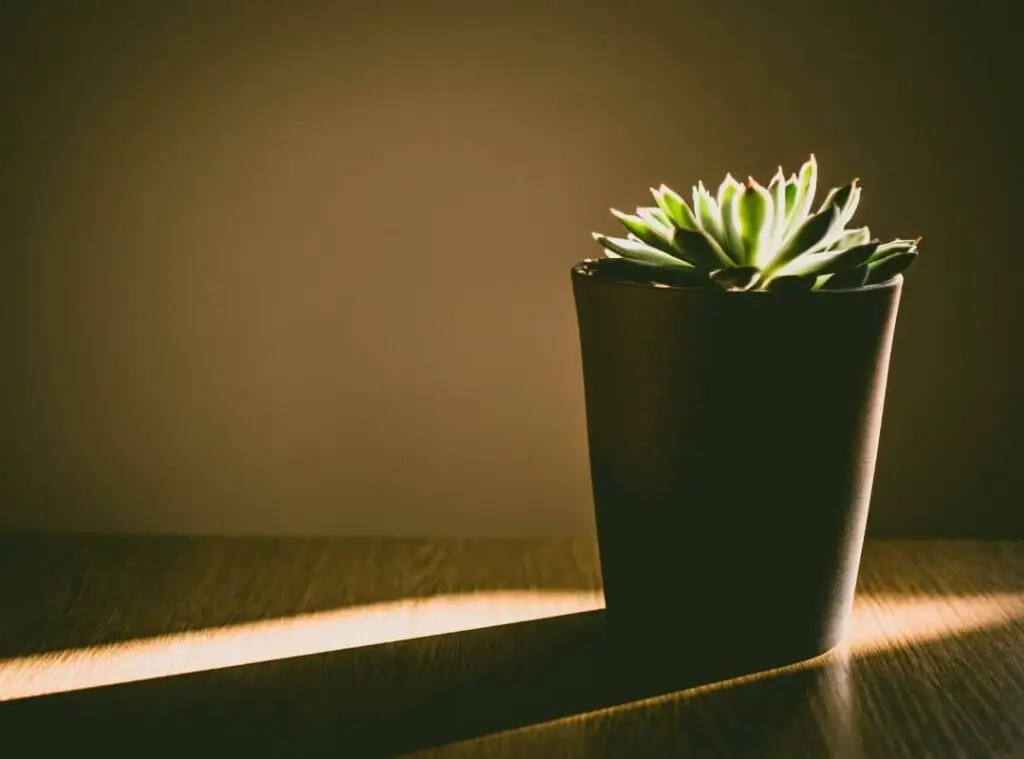
Signs of light stress on succulents
Etiolation is the most significant sign which these succulents could show when they are in light stress (lack of light).
As a result of this condition, the plant will tend to look tall and leggy. They basically lean towards the direction where they could absorb sunlight when they lack sunlight.
Consequently, they become leggy whilst turning their stem trunk bent towards that direction.
When they suffer from this condition and when they lack sunlight for a prolonged period, they halt their growth process as well.
Once your plant is going through this condition, there is nothing you could do to get it back to the previous enchanting looks they had. It will remain leggy forever. The best remedy for this would be propagating them.
When succulents get intense light they also face sunburns as other plants. As a result of sun burns there will be brown or blackish patches on succulent leaves.
Light stress during flowering
There are some succulents which will bloom only if the plants have gone through stress successfully.
On the other hand, there could be some plants which will flower when they are in good health and when they lack stress.
Plants such as Christmas, thanksgiving and Easter cacti blossom very hard even though we provide them with tropical growing conditions, a lot of sunlight and heat during the whole year.
Many people tend to grow succulents especially due to the attractive blooms they produce. That is what makes these succulents more attractive.
As such, they all require increased darkness and cooling off which will stimulate the flowering.
Nutrient deficiencies make light burn worse
If your plant lacks nutrient in the soil, they will be more prone to sunburns than nutrient available plants.
In this instance, nutrient rich plants can heal the sun burns easily with available nutrients. But if your plant has any nutrient deficiencies, it will take some time to heal sun burns or face intense light conditions.
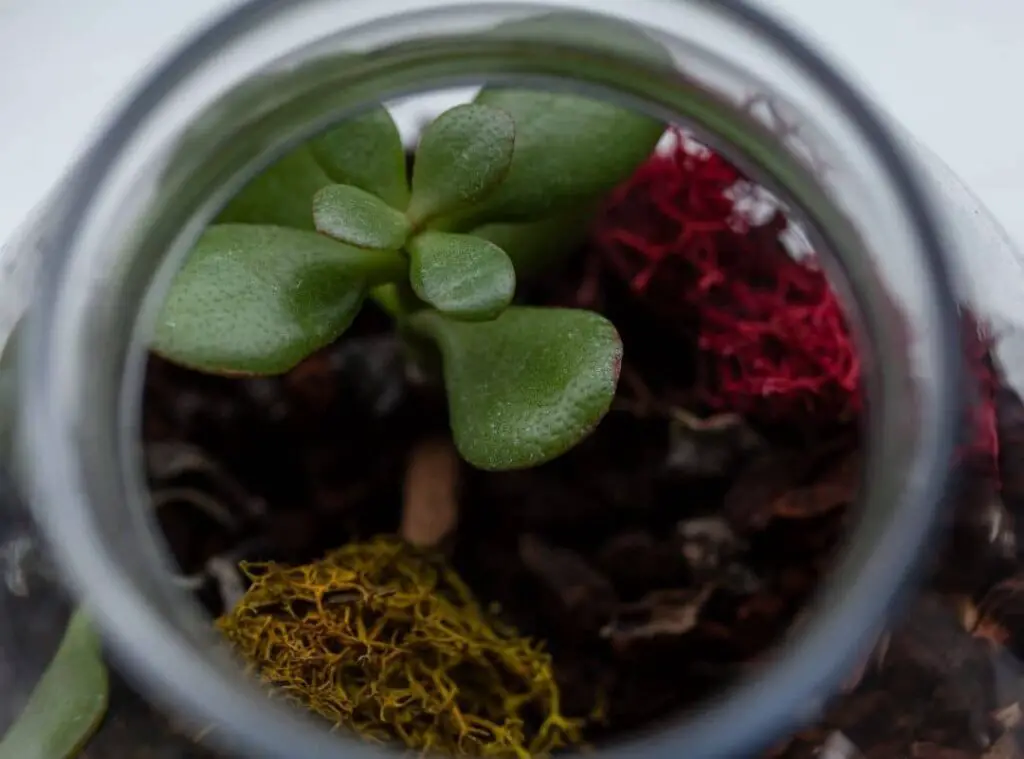
Watering and light stress
Whenever you spot a plant in stress, you cannot assume that the plant will perish soon. It indicates that you need to increase your care towards these plants.
They could even expect you to move them to some other place. However, the most common reason to cause light stress among these plants is that they get less water and gain plenty of sunlight.
You could stress succulents for their looks on a temporary basis. However, you need to refrain from doing that in the long term. Unless there will be root rot and ultimately, they could even perish.
What is grow light
Growing lamps is another term for “grow lights”. There are several kinds of lights which are available in various shapes. It is easy to select the exact type you want.
Some of the grow lights which you could use are incandescent light bulbs, fluorescent bulbs, and LED bulbs.
They could be very handy in using to provide additional light when a plant does not get adequate light.
You could utilize the grow lights for succulents which you specially grow indoors. Generally, indoor plants do not get adequate sunlight.
The most productive remedy for this would be using a grow light.
If we elaborate more on them, many people used to utilize Incandescent bulbs as grow lights. They usually convert the 2 % of the electricity into light whereas they use the rest 98 % to release heat.
However, this is not the best type to use as grow light. As they are not energy efficient.
Next is the Fluorescent bulbs. This is something which you will come across in your day-to-day life. They form a bright light.
They usually come in long tube shapes. Further they will have numerous dimensions as well. T5 and T8 are a couple of very popular formats which a lot of people use. Some people use T12 on and off.
T5 is the best option for any home gardeners. They are tiny in size and more compact than others. It could have several lengths as well. Out of that, you could often spot them in one and two feet mostly.
Moreover, you could use CFL bulbs for this purpose as well. It would be very handy if you only have to provide light for just one plant.
They look like classic incandescent light bulbs. You could integrate them to existing lamps very easily.
LED bulbs are another option which you could use as grow lights. LEDs stand for light emitting diodes. This is a new way of illuminating.
By far they are the most energy efficient bulbs compared to other bulbs. They produce more light and less heat. They use minimal electricity as well.
One more interesting factor regarding LED bulbs is that you could emit a very narrow light band based on the material which was used to produce it.
They would be very beneficial for your purpose as they are very energy efficient and since we can select just red and blue LEDS for our purpose.
It would be ideal if we could use red light, as that is a crucial trigger for flower blossoming for most of the plants.
If you use more and more red lights, it could stimulate the flower blossoming of the plants. On the other hand, blue light would be beneficial to increase the vegetative growth of the plant.
LED bulbs are little in size. As such we could use them in different ways. You could spot them in tube forms as well as in CFL varieties too.
Moreover, you could even utilize LED strips to increase the level of sunlight in a place where you cannot fit a tube or a bulb.
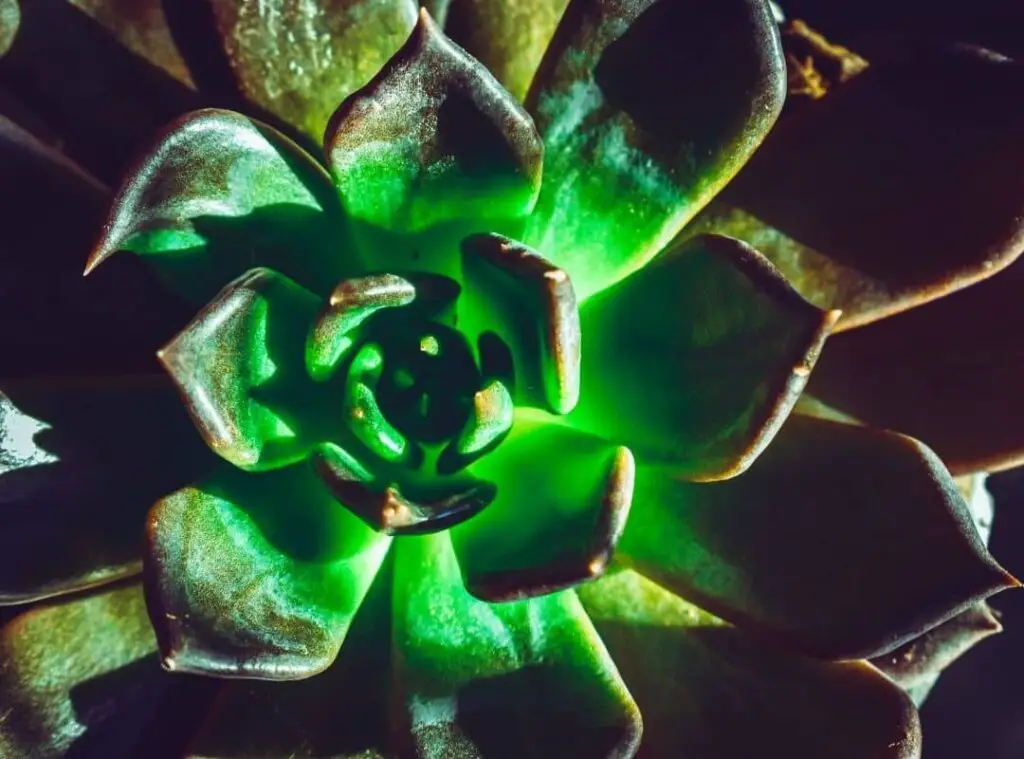
Does grow light good for succulents
It is great if you could provide natural sunlight for a plant. Having said that, artificial light could also be very beneficial.
Particularly for someone who is growing succulents indoors under insufficient sunlight
Further consider that you are growing plants outdoors, when the colder months arrive, you need to bring them indoors.
In that case, growing lights would be very useful. Unless your plant will suffer from etiolation and you could even lose your plant.
Grow lights would be useful when it comes to propagating the succulents also. That is simply because grow lights are not too intense.
You could use a wavelength of light which could stimulate the flowering and fruiting. Grow lights come with a cost. However, it would be beneficial in so many ways for your succulent plants.
Grow light stressing in succulents
If you expose your succulent for more light, it could help to showcase bright shades of color of the plants.
To do this you could plant them outdoors for about one week where you expose them to bright sunlight. Avoid doing this if you live in colder weather conditions.
Next you could love them to partial sunlight locations and leave them there for about one more week like that to adjust.
Afterwards, you may bring them indoors and locate them under grow lights or in another full sunlight atmosphere.
Cacti and sedums will produce attractive red, pink and purple shades when you expose them to more sunlight. You could make their pigments more active by doing this.
However, if you are planning to do light stress for your plants, you need to observe them more closely. When you do that, you could identify if there are any signs of light burning in advance.
Usually, succulents could recover from problems which are related to light within a short period such as in one week or in two weeks.
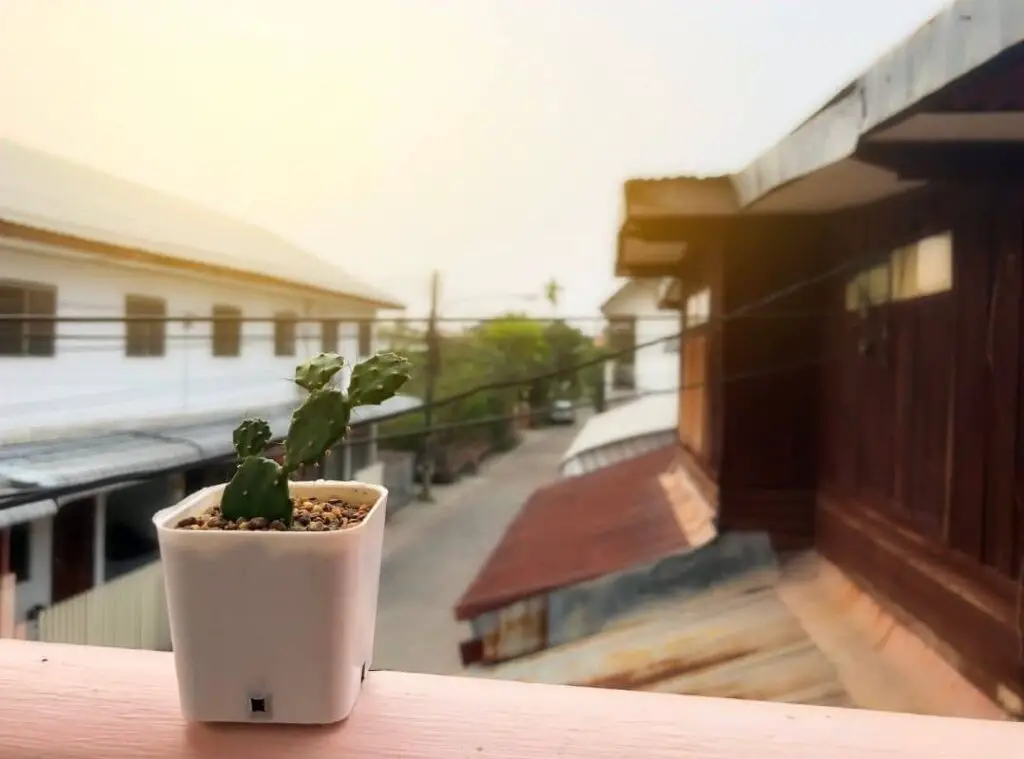
Benefits of light stress in succulents
The most significant benefit of light stress in succulents is that we could get attractive shades of color to the plants. That will make the plant look pretty.
Will plants recover from light burn?
Unfortunately, you cannot recover the succulents which have gone through sunburn. You cannot get it back to the normal look despite what you do.
As such If you spot any succulent which has gone through light burn and discolored , they will remain in the same way and it will be permanent.
Light stress tolerant succulents
Sedum succulents are very popular as succulents which could withstand the full sunlight.
The plants which would love to grow in full sunlight tend to make pink, red or purple shades as their pigments will be more active when they are exposed to full sunlight.
You could also try the following succulent varieties for sunny outdoor locations,
- Sedum
- Heuffelii
- Cactus
- Agave
On the other hand, there are low light indoor succulents. They could tolerate total darkness for about a couple of weeks.
The succulents which could withstand low indoor light conditions are usually green in color. That is due to the high chlorophyll content they have.
They could absorb any level of sunlight due to that factor. Some examples for low light tolerant succulents are as follows,
- Gasteria
- Haworthia
- Jade plants (Crassula)
- Air plants (Tillandsia)
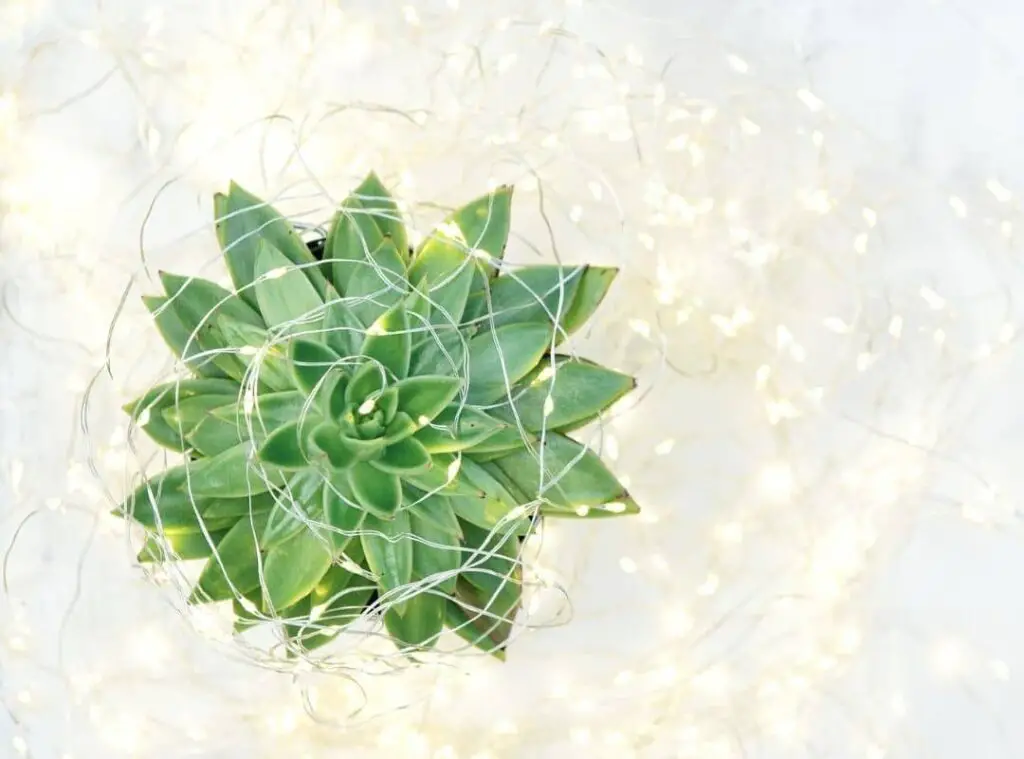
How to recover from light stress / Shelter over succulent plants
You could place these plants to a partial sunlight place and leave them for a couple of weeks to adapt to those conditions.
Next you could bring those plants indoors and locate somewhere where they are exposed to grow light or even in another place where they get full sunlight.
Provide sufficient nutrients
You need to make sure that you provide the essential nutrients for a succulent specially which contains micronutrients. It is a crucial factor for the well being of a succulent.
Identify seasonal light stress in the succulent
Generally, the heat could be a factor for certain types of succulent to turn color.
If you consider a succulent like Aloe nobilis, those plants remain to stay in green. Once the weather conditions cool down, they tend to perk up and form new growth.
Furthermore, you cannot expect all succulents to turn the shade of colors such as pink, red or orange when they are going through stress.
Actually, a lot of succulents are not like that. However there are succulents such as Aloes, Crassulas which usually do.
On the other hand, succulents such as Kalanchoes euphorbias sempervivums, sedums, aeoniums and echeverias. Agaves usually do not turn their color shades.
Read Next: 13 Succulent Ground Cover Plants To Brighten Your Home Garden
